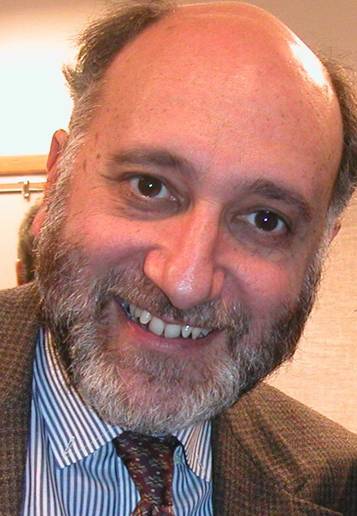
Currently, Dr. Jeffrey Laskin, director of the Rutgers University CounterACT Research Center of Excellence, leads a team conducting research on the exposure and health effects of chemical warfare agents used by terrorists. The researchers are determined to develop medical countermeasures.
Specifically, Laskin, a distinguished professor and chief of the toxicology division at the Rutgers Environmental and Occupational Health Sciences Institute, said their research focuses on countermeasures that would help people who have come in contact with sulfur mustard, also known as mustard gas.
Categorized as a blister agent, sulfur mustard causes severe burning of the skin, eyes and respiratory tract on contact, according to the Centers for Disease Control and Prevention (CDC), but it’s not until hours after exposure that a person actually begins feeling pain and experiences toxic effects that are incapacitating and may cause death.
In fact, sulfur mustard, which can be an oily liquid or colorless vapor, has been used as a chemical warfare agent since being introduced in World War I by the Germans and the CDC says it has been used to cause delayed casualties. Such chemical attacks remain in use today by insurgents in Syria, Laskin said, “and this is of great concern because sulfur mustard may end up being used elsewhere in the world by terrorists.”
Another chemical concern in Syria is sarin gas, which was reportedly used in April by President Bashar al-Assad to kill dozens of his own people in an Idlib Province town. The Syrian government’s alleged chemical attack resulted in an American military missile strike, one that U.S. President Donald Trump is prepared to repeat now that he suspects Assad could be preparing to launch a similar chemical attack.
“As we have previously stated, the United States is in Syria to eliminate the Islamic State of Iraq and Syria,” the White House said Monday in a statement. “If, however, Mr. Assad conducts another mass murder attack using chemical weapons, he and his military will pay a heavy price.”
Sarin gas is a nerve agent cited by the CDC as one of the most toxic of the known chemical warfare agents. Exposure to a fraction of an ounce of sarin can cause death in minutes unless antidotes are administered within minutes to a few hours, the CDC says.
Conversely, there are no antidotes for sulfur mustard toxicity and the CDC says “decontamination of all potentially exposed areas within minutes after exposure is the only effective means of decreasing tissue damage.”
Because he works with the military, Laskin understands the urgency behind finding antidotes, he said.
Common goals
Funded under the auspices of the Project Bioshield Act of 2004 and the All Hazards and Pandemic Act of 2013, Laskin said the National Institutes of Health (NIH) last year awarded Rutgers University a five-year grant for more than $19 million to research the development of potential drugs to treat toxicity from chemical agents used in a terrorist attack.
This is the third round of funding for the research, which first received NIH funds in 2006 and again in 2011. The funds allow scientists at Rutgers, New York Medical College and Lehigh University to continue a decades-long collaboration aimed at developing countermeasure drug therapies. In total, their research has garnered more than $60 million in NIH funding.
Preparedness and treatment of large numbers of people in the event of a chemical attack are critical, along with protecting soldiers who may be exposed to chemicals on the battlefield, said Laskin, who added that no work is conducted on-site at the center due to certain government restrictions.
“We work with the military and contract research organizations and try to understand how these chemicals work,” Laskin said in a recent interview with Homeland Preparedness News. “We also test compounds and work with pharmaceutical companies when we can,” Laskin said.
In addition to finding countermeasures to these chemical attacks, Laskin said their research also relates to preparedness and response for other events, such as railroad and traffic accidents that might occur in populated areas involving overturned vehicles carrying toxic loads of chemicals.
“It’s not a normal thing for a local hospital to have to deal with that kind of an accident,” Laskin said, explaining that such a situation could be comparable to hundreds of soldiers in warfare suffering chemical exposure depending on the size of a railcar or truck’s load and the number of people who come in contact with the poison.
Laskin thinks first responders on the front lines for such events “are doing an amazing job” toward preparedness and response to such events, and that hospitals are effectively working to stockpile drugs, “but that’s not to say there aren’t opportunities to do more.”
Everyone is working across a variety of levels to “face these huge challenges,” Laskin said.
His team also works with the U.S. Food and Drug Administration in efforts around how to move protocols more quickly through clinical trials to find and develop promising new drugs, get them federally approved and then get them into the market. It’s an exhaustive process, he said.
“We have a number of leads — candidate drugs — that could potentially be useful that we’re trying to bring into the FDA process,” Laskin said. “We’re just starting what is a multi-year process. We’re optimistic we’ll come up with some drugs.”
All of the parties involved, Laskin noted, “are working together for the greater good.”
“We need to have options and be prepared,” Laskin said. “This is not a problem that’s going to go away.”




